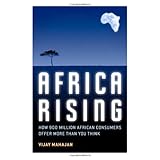
Average Reviews:

(More customer reviews)Wall Street Journal, June 18, 2011
Text By TOBIAS GREY
'Let us Hurry to love the little train," wrote the French poet Guillaume Apollinaire. And, with first class tickets en poche, a cozy apartment in Paris to return to and a Pulitzer Prize-winning husband to bounce ideas off at the end of each day, Ina Caro can be forgiven for following suit.
An American more accustomed to the dozy Acela, she delights in being able to "take a train from Paris, travel century by century"--often as far afield as Tours, almost 250 kilometers away--"and be back in Paris each night, usually in time for dinner." Taking in tow her biographer husband "Bob" (that's Robert Caro of "The Power Broker" fame to you and me), Ms. Caro makes for a keen, if sometimes breathless guide to monarchical France and its architecture in this follow-up to her car-bound "The Road from the Past: Travelling through History in France" (1996).
Her method, simplicity itself, is to map out her travel itinerary chronologically. The reader, instead of wading through a jumble of dates and fragments of history thrown together indiscriminately, is taken on 25 one-day train trips departing from Paris. Together the sites--all accessible by Metro, commuter rail, or France's high-speed TGVs (Train à Grande Vitesse), which travel at speeds in excess of 200 miles an hour--trace the history of France from the reign of King Louis VI ("The Fat") through the French Revolution and into the post-Napoleonic age. "Unlike the time traveler in Michael Crichton's book 'Timeline,' I didn't need to be faxed to the Middle Ages," writes Ms. Caro. "I could take the TGV from Paris."
Ms. Caro starts her history just a short metro ride out of Paris to the 12th-century basilica of Saint-Denis, the traditional burial place of the kings and queens of France. It was here, she notes, that Abbot Suger, subsequently dubbed the father of the Gothic Cathedral, "first pierced the solid stone walls of the dark ages to create the world's first rose window so that jewelled light would shine on and glorify the king [Louis VI] he wished to raise above all men."
Suger, a dumpy little man who was born a peasant but somehow rose to become an abbot at a time when "social mobility did not exist in France," is just the first of many fascinating historical characters we meet in "Paris to the Past." These include not only the usual suspects--Joan of Arc, Marie Antoinette, Napoleon I--but less well-known figures.
We learn that the imposing 13th-century fortress in Angers (more than 200 miles away from Paris, but accessible thanks to the TGV) was built by Blanche de Castille, Louis VIII's cruel and dynamic wife, who served as regent to Louis VI (St. Louis).
Nicolas Fouquet (Louis XIV's spendthrift superintendent) created Vaux-Le-Vicomte, the picturesque 17th-century chateau off the RER commuter rail. Entering, Ms. Caro writes, is "like walking inside a many-faceted jewel."
View Full Image
A train prepares to depart Paris's Gare du Nord.
.The personalities jump off the page, none more so than Louis XIV, whose superannuated yearning for his second (and secret) wife, Madame de Maintenon, cannot fail to raise a chuckle. "At the age of seventy, Louis XIV made love to Madame de Maintenon twice a day, much to her annoyance," writes a typically playful Ms. Caro. "At seventy-eight, she consulted her priest to find out if it was really necessary to accommodate her husband; the priest informed her it was her duty as a wife to do so."
There are one or two curious omissions in Ms. Caro's travel itinerary, such as Beauvais Cathedral, which can easily be reached via a regional train and has the tallest Gothic vault in the world. But any traveler using the book as a guide will value the inclusion of such lesser known gems as Chantilly, the aristocratic chateau a short RER ride outside of Paris, which has the second finest art collection in France, after the Louvre.
Ms. Caro's husband is a stalwart admirer of Napoleon I. Her own hero, however, is the great emperor's underrated nephew Napoleon III, because it was he who hired master planner Baron Haussmann to clear the slums of Paris. "In doing so Haussmann transformed the medieval city into a modern nineteenth-century bourgeois city filled with parks and magnificent vistas," writes Ms. Caro. The artists and bohemians who came to people it would complete the picture.
Click Here to see more reviews about:
Paris to the Past: Traveling through French History by Train"I'd rather go to France with Ina Caro than with Henry Adams or Henry James."-Peter Prescott, Newsweek
In one of the most inventive travel books in years, Ina Caro invites readers on twenty-five one-day train trips that depart from Paris and transport us back through seven hundred years of French history. Whether taking us to Orléans to evoke the miraculous visions of Joan of Arc, to Versailles to experience the flamboyant achievements of Louis XIV, or to the Place de la Concorde to witness the beheading of Marie Antoinette, Caro animates history with her lush descriptions of architectural splendors and tales of court intrigue. Organizing her destinations chronologically from twelfth-century Saint-Denis to the nineteenth-century Restoration at Chantilly, Caro appeals not only to the casual tourist aboard the Metro or the TGV but also to the armchair reader of Peter Mayle's A Year in Provence. Caro's passion for and knowledge of France-its soaring cathedrals, enthralling history, and sumptuous cuisine-are so impressive that Paris to the Past promises to become one of the classic guidebooks of our time. 6 maps

Click here for more information about Paris to the Past: Traveling through French History by Train





















